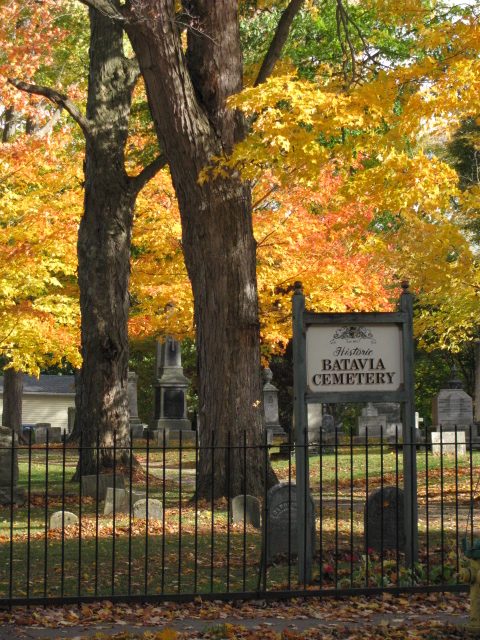
Batavia was founded in 1801 by Joseph Ellicott, resident agent for The Holland Land Company, who is buried in the Historic Batavia Cemetery. The Holland Land Company purchased 3.5 million acres from Robert Morris, “Financier of the American Revolution”, who acquired the land from the State of Massachusetts. The Seneca Nation gave up their rights to the land through the 1797 Treaty of Big Tree for a payment of $100,000.
The first cemetery in Batavia was established in 1806 on the Tonawanda Creek near what is today South Lyon Street. After the site on the Tonawanda Creek was declared unsuitable because of high water problems, the Batavia Cemetery was relocated in 1823 to Cemetery Street, now Harvester Avenue, between the two railroads on Lot 43. The parcel, which was owned by St. James’ Episcopal Church and the Presbyterian Church, was laid out by Ebenezer Mix into 88 plots.

In 1880 a number of lot owners organized under the State Laws and formed the Batavia Cemetery Association, a 501(c)(13) not-for-profit corporation. The Association maintains and preserves this most beautiful and historic site today.
By 1990 the cemetery had again fallen on hard times and the Association, with initial assistance from the Landmark Society of Genesee County, began the “Restoration ‘90” campaign to raise money for repairs.
Initially, much brush was hauled out, the wrought iron fence was rebuilt and repaired, more than 200 stones were reset and a new sign designed. Over the succeeding years, more than 50 trees were planted in the James Tyler Roth Memorial Arboretum, the Greek revival building was reroofed and repainted, and the front columns were replaced with columns from the razed Christian Science Church on Main Street in Batavia.
In 1999, after an extensive site review by architect John Bero, the Richmond mausoleum was cleaned and repointed. The stained-glass window in the mausoleum, which had been destroyed by vandals in the late 20th century, was replaced by Valerie O’Hara of Pike Stained Glass Studios and rededicated on August 27, 2016, the 150th anniversary of Dean Richmond’s death. In 2021 the steps were reset and repointed.
Batavia Cemetery was designated the first historic site by the newly established City of Batavia Historic Preservation Commission in 1996, and was listed on the State and National Register of Historic Places in 2002. A Historic Landscape Award was received from the Landmark Society of Western New York in 1998.
The Historic Batavia Cemetery is a destination for cultural heritage tourism, landscape, history, genealogy, art, architecture and much more.

(585) 343-0248
CONTACT US

New York State Cemetery Information and Disclosures
New York State Cemetery Information and Disclosures
